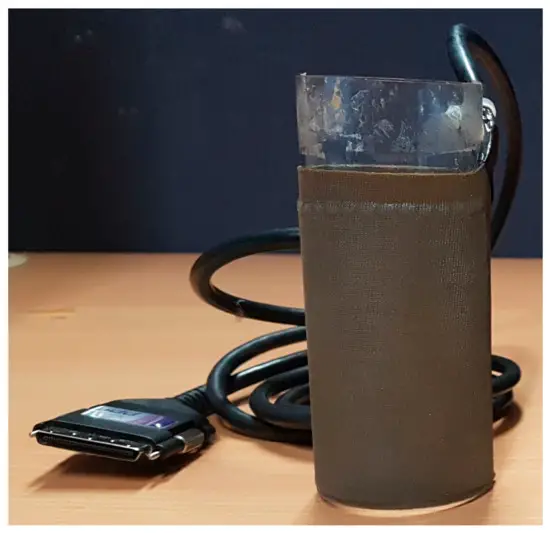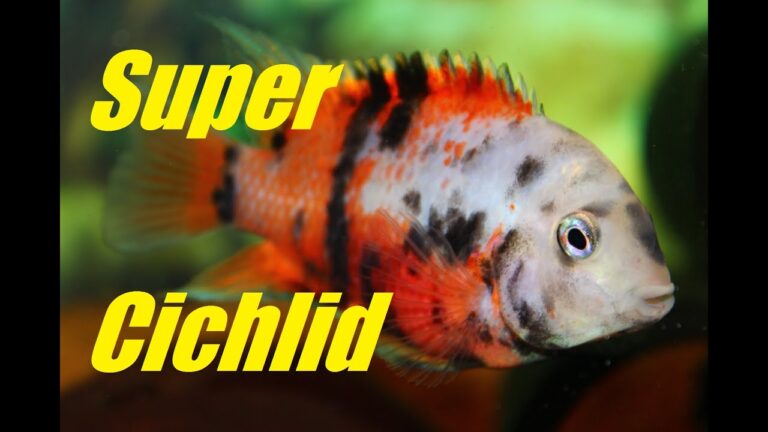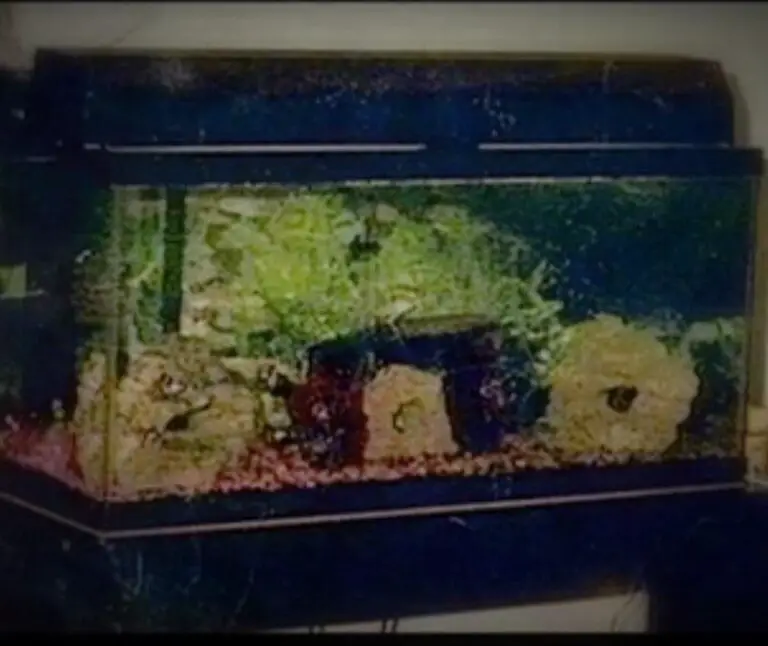Which way does the filter go in a fish tank?
The filter in a fish tank should be installed so that water is pulled into the filter, passes through the filter media, and then is returned to the aquarium.
This helps to remove debris, waste, and harmful chemicals from the water, improving the overall water quality for your fish.
The exact installation process may vary depending on the specific type and model of filter you are using, so it’s always a good idea to refer to the manufacturer’s instructions for guidance.
In a typical fish tank, the filter usually goes in one of two ways:
HOB (Hang-on-Back) Filter: In this type of filter, the filter unit hangs on the back of the aquarium, and the water is drawn up from the tank through an intake tube.
The water is then passed through a filter media, such as activated carbon or sponge, and returned to the tank via an outflow tube.
The filter media should be placed inside the filter unit, in the direction of water flow.
Canister Filter: In this type of filter, the filter unit is placed outside the tank, and the water is drawn up through an intake tube and into the canister.
The water is then passed through various filter media, such as mechanical, biological, and chemical filters, and returned to the tank through an outflow tube.
The filter media should be arranged in the canister in the direction of water flow.
It is important to ensure that the filter media is properly installed in the direction of water flow, as this will help ensure efficient filtration and maintain good water quality in the fish tank.
What to do when water evaporates from the fish tank?
When water evaporates from a fish tank, it’s important to replace it with fresh water. Here are some steps you can take:
Check the water level: Before adding new water, check the water level in the tank. If the water level is too low, it can cause stress to the fish and affect their health.
Prepare new water: Fill a clean bucket or container with tap water and let it sit for at least 24 hours to allow chlorine and other chemicals to dissipate.
You can also use a dechlorinator to make the water safe for the fish.
Add new water: Slowly pour the new water into the tank to avoid disturbing the fish and the substrate.
Use a thermometer to make sure the new water is the same temperature as the water in the tank to avoid shocking the fish.
Monitor the water parameters: After adding new water, it’s important to monitor the water parameters, such as pH, ammonia, nitrite, and nitrate levels, to ensure they remain within the appropriate range for your fish.
You may need to perform partial water changes more frequently if the water quality deteriorates.
Consider using a cover: If the water evaporates quickly, you may want to consider using a cover on your tank to reduce evaporation and maintain a stable water level.
By following these steps, you can help ensure that your fish have a healthy and stable environment in their tank.
Why do fish swim at the top of the tank?
Fish can swim at the top of the tank for various reasons. Here are some possible explanations:
Oxygen levels: If the oxygen levels in the water are low, fish may swim to the top of the tank to get more oxygen from the air-water interface.
Temperature: Some species of fish prefer warmer water and may swim to the top of the tank where the water is warmer due to heat from lights or other sources.
Feeding: Fish may associate the top of the tank with feeding time and swim there in anticipation of being fed.
Water quality: Poor water quality can make it difficult for fish to breathe, so they may swim to the top of the tank to try to find better water quality.
Behavioral reasons: Some fish are just naturally inclined to swim at the top of the tank, while others may be exploring their environment or trying to establish dominance over other fish in the tank.
It’s important to monitor your fish’s behavior and tank conditions to ensure their health and well-being.
If you notice any unusual behavior, it may be a sign of an underlying problem that needs to be addressed.
How to get rid of microbubbles in the fish tank?
Microbubbles in a fish tank can be unsightly and can also cause problems for your fish. Here are some steps to help get rid of them:
Check your equipment: Microbubbles can be caused by equipment such as air stones, filters, and protein skimmers.
Make sure that everything is properly set up and functioning correctly.
Adjust water flow: High water flow can cause microbubbles to form. Try adjusting the flow rate of your filter or pump to see if this helps.
Clean the tank: A dirty tank can contribute to the formation of microbubbles. Make sure to perform regular water changes and keep the tank clean.
Use a surface skimmer: A surface skimmer can help to remove any microbubbles that are forming on the surface of the water.
Consider using a defoamer: If the above steps don’t work, you can try using a defoamer product specifically designed for aquariums. Be sure to follow the instructions carefully.
It’s important to note that some amount of microbubbles is normal in a fish tank and may not be harmful to your fish.
If you notice excessive amounts of microbubbles, it’s best to take action to prevent any potential harm to your fish.
What do fish see from inside the tank?
Fish have a very different perspective than humans, and their vision is affected by several factors.
360-degree view: Fish have a wide field of vision and can see in all directions.
This is because their eyes are located on the sides of their heads, which allows them to have a panoramic view of their surroundings.
Tank shape: The shape of the tank can affect the way fish perceive their environment.
A curved tank can distort their view, while a rectangular tank can provide a more natural view.
Lighting: The lighting in the tank can affect the color of the water and the way fish perceive their surroundings.
Too much or too little light can also cause stress to the fish.
Colors: Fish perceive colors differently from humans, and they can see colors in the ultraviolet range that are not visible to us.
The color of the water and the decorations in the tank can also affect the way fish see their environment.
Overall, the view from inside the tank is different from the way humans perceive the world.
Understanding how fish see their environment can help you create a more natural and comfortable habitat for them.
Which way does the filter cartridge go in a fish tank?
Detailed guide on how to properly install a filter cartridge in a fish tank:
Read the manufacturer’s instructions: Before you start, make sure to read the manufacturer’s instructions that came with your filter cartridge.
Different filters may have different requirements and it’s important to follow the instructions to ensure the filter cartridge works properly.
Turn off the filter: Turn off the filter before removing the old filter cartridge or installing a new one.
This will prevent water from flowing while you are working on the filter.
Remove the old filter cartridge: If you are replacing an old filter cartridge, remove it from the filter housing.
Be careful not to disturb the beneficial bacteria that may be growing on the old filter media.
These bacteria help to maintain a healthy aquarium environment.
Check the orientation of the filter cartridge: Check the orientation of the new filter cartridge before installation.
Most filter cartridges have an arrow or other indicator that shows the direction of water flow.
Make sure to insert the cartridge into the filter housing with the indicator facing in the correct direction.
Rinse the filter cartridge: Rinse the new filter cartridge with tap water before installing it in the filter.
This will remove any loose debris or dust that may have accumulated during storage.
Install the filter cartridge: Install the new filter cartridge into the filter housing, making sure to seat it securely.
Depending on the type of filter, you may need to snap it into place or screw it in.
Turn on the filter: Once the new filter cartridge is installed, turn on the filter and allow it to run for a few minutes.
This will allow the water to flow through the cartridge and remove any air bubbles that may have formed during installation.
Monitor the water quality: Monitor the water quality in your aquarium over the next few days to ensure the filter cartridge is working properly.
A properly functioning filter will help to maintain a healthy and clean aquarium environment for your fish.
Moreover, proper installation of a filter cartridge is important for maintaining a healthy aquarium environment.
Follow the manufacturer’s instructions, check the orientation of the filter cartridge, rinse it before installation, and monitor the water quality to ensure the filter is working properly.
Which way does the tetra filter go?
Step-by-step guide to installing a Tetra filter:
- Choose a location for your Tetra filter that is near your aquarium and can be easily accessed for maintenance and cleaning.
- Determine the direction of water flow in your aquarium. This is typically from the top to the bottom of the tank, but it can vary depending on the setup.
- Locate the intake tube and outflow tube on your Tetra filter. The intake tube is the one that draws water into the filter, and the outflow tube is the one that releases clean water back into the aquarium.
- Attach the intake tube to the filter by sliding it into the designated opening. Make sure it is securely in place.
- Attach the outflow tube to the filter in the same way. Again, make sure it is securely in place.
- Fill the filter with filter media, following the manufacturer’s instructions. This may involve adding filter pads, carbon, or other filter media to the appropriate compartments.
- Plug in the filter and turn it on. You should see water flowing into the filter through the intake tube and then back into the aquarium through the outflow tube.
- Monitor the filter for a few days to ensure that it is working properly. If you notice any issues, refer to the manufacturer’s instructions or consult with a professional for assistance.
- Clean the filter regularly to ensure optimal performance. This may involve replacing filter media or cleaning the filter components, such as the impeller or motor.
By following these steps, you should be able to successfully install and maintain your Tetra filter in your aquarium.
Remember to always refer to the manufacturer’s instructions and take necessary safety precautions when handling electrical equipment near water.





